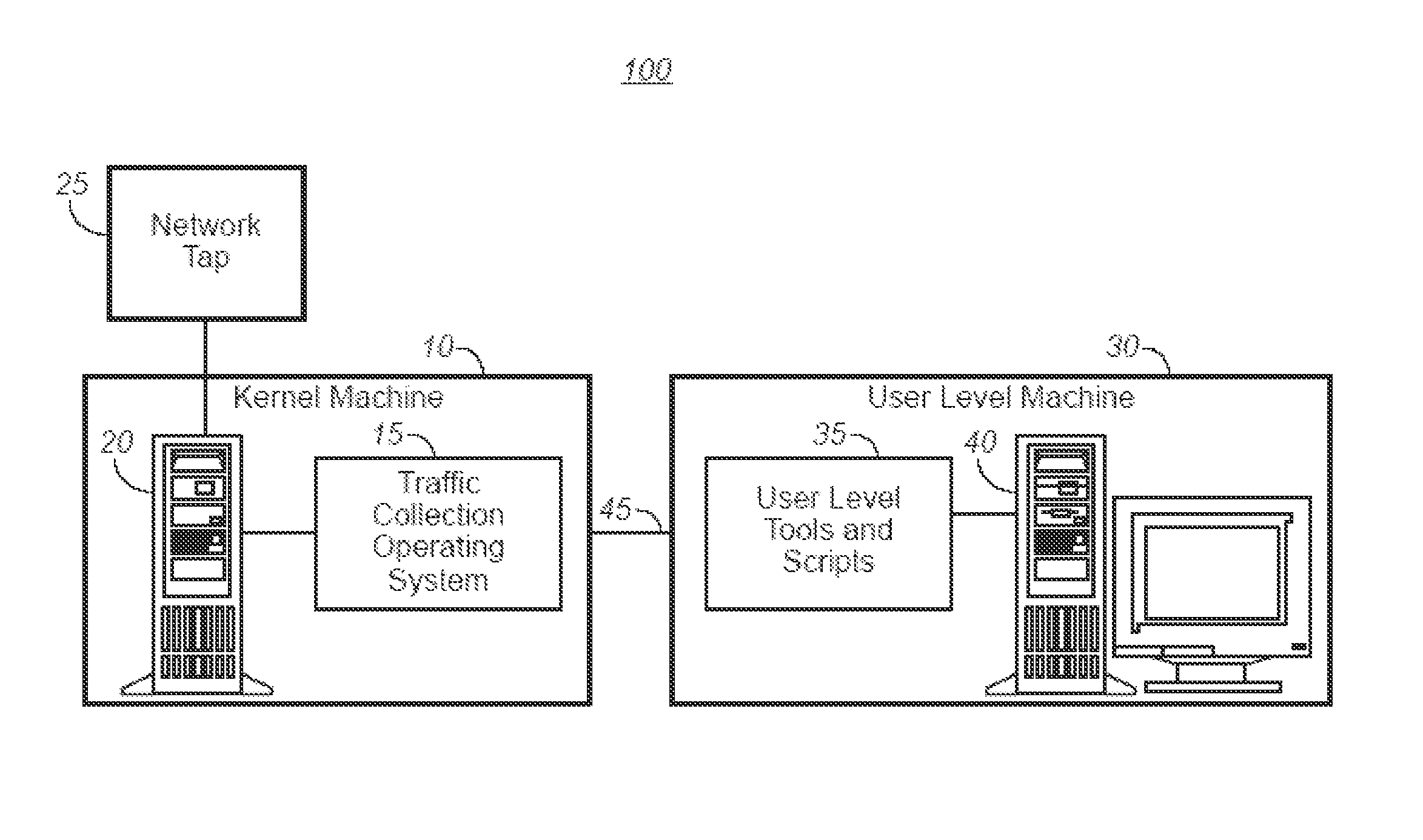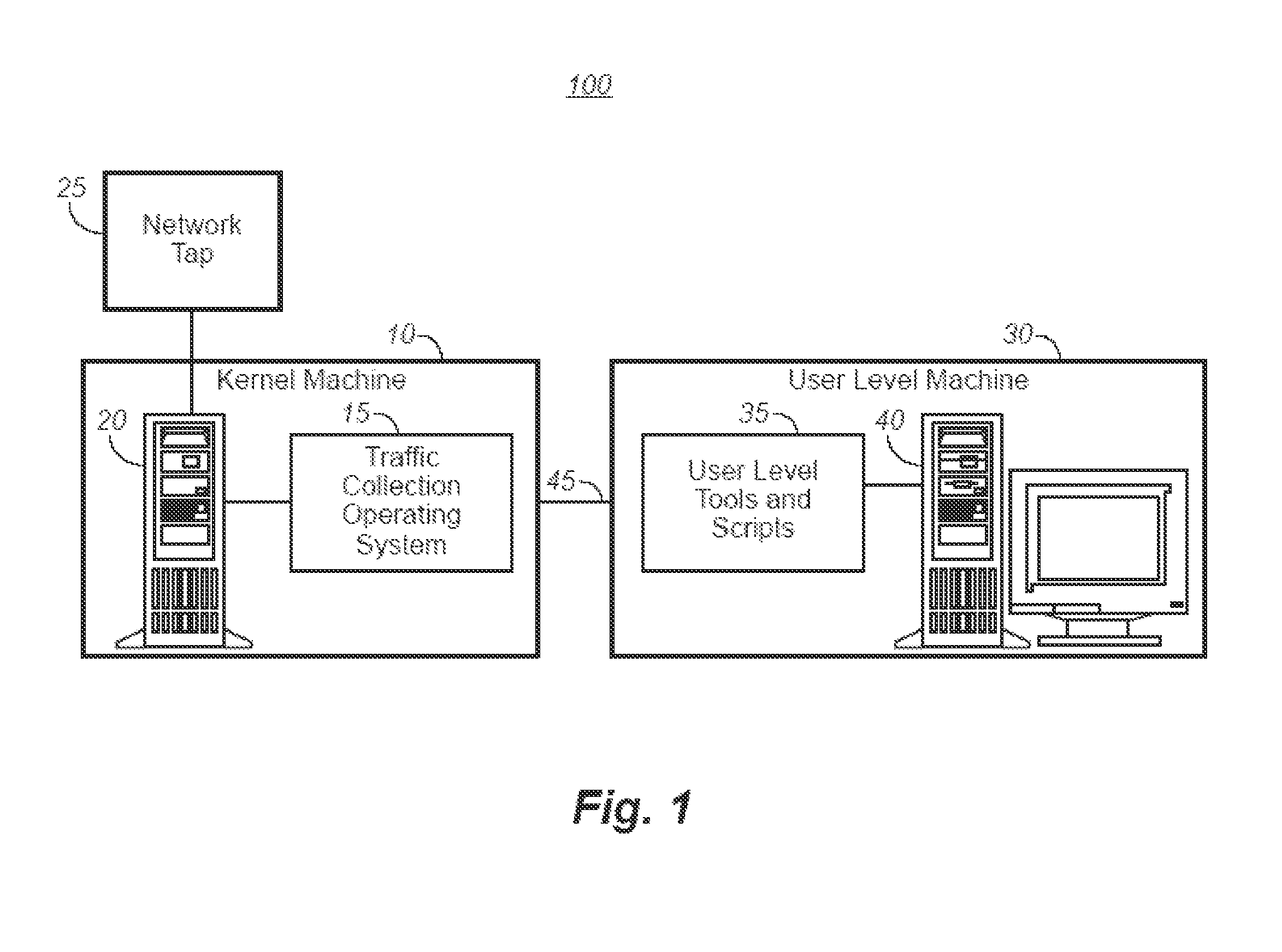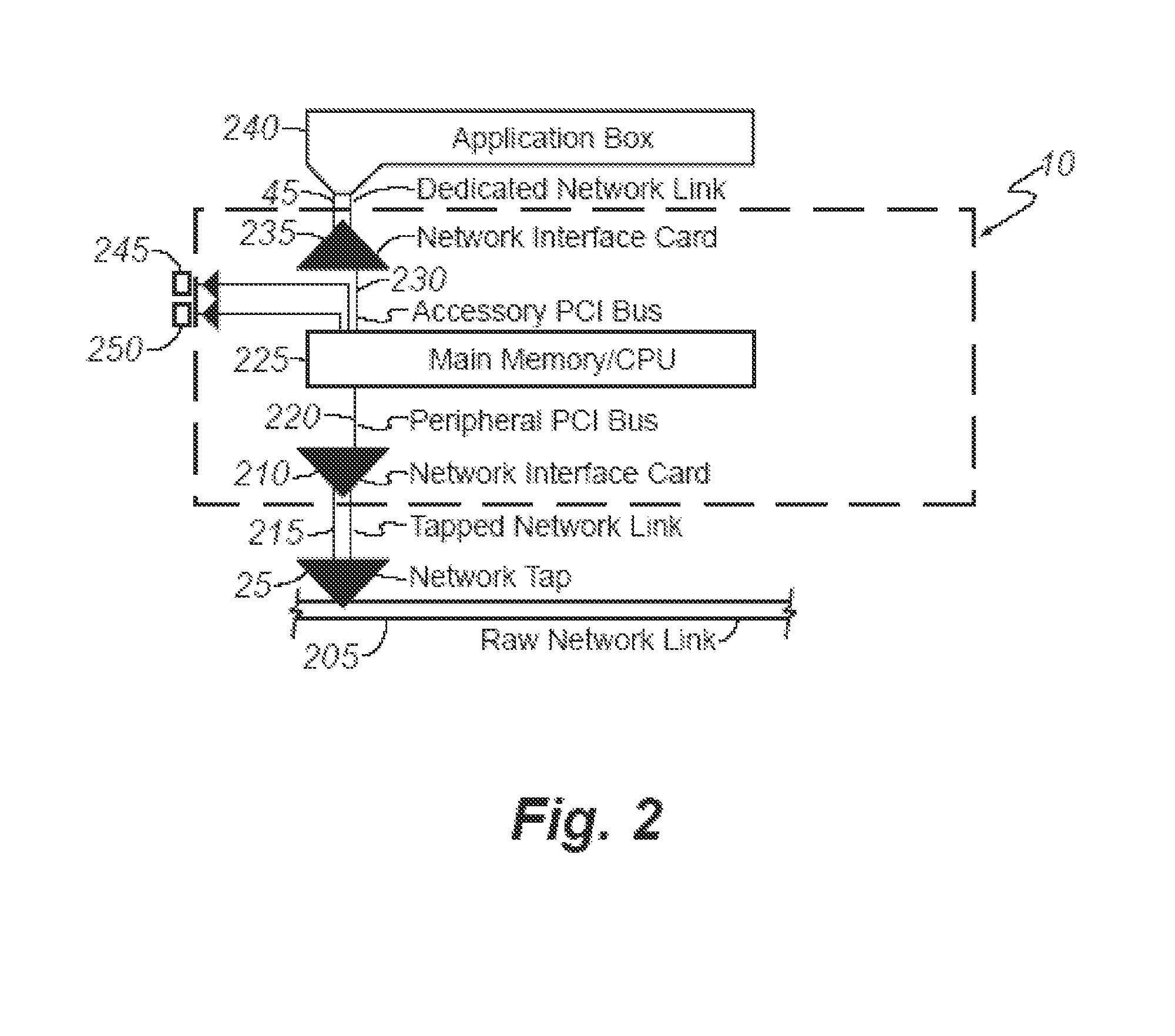High-speed and high-fidelity system and method for collecting network traffic
- Summary
- Abstract
- Description
- Claims
- Application Information
AI Technical Summary
Benefits of technology
Problems solved by technology
Method used
Image
Examples
second embodiment
[0049]The simplest configuration scales well beyond current techniques, but all the traffic still passes through a single host. To scale even further, e.g., 10 Gbps, the 64-bit / 66-MHz PCI bus limitation of 4.2 Gbps must be avoided. the present system is shown in FIG. 3, illustrating a configuration with multiple taps to reach even higher network speeds. System 300 is generally similar in design and function to system 10 with exception that network traffic collection configurations containing system 300 are duplicated and attached in parallel to the same raw network link 205, as shown by network traffic collection configurations 305, 310, 315. Packet headers are passed to one data processor 240 as shown in FIG. 2 or multiple data processors 320 as shown in FIG. 3.
[0050]Placing network traffic collection configurations 305, 310, 315 in parallel removes the requirement that all traffic move through a single host. However, this approach only works if the following conditions hold:
[0051]...
third embodiment
[0058]FIG. 4 shows how system 400 might be implemented in hardware analogous to a network switch, possibly using a commercially available switch with predefined routes to appropriately split traffic. System 400 is generally similar in design and function to system 10 with the exception that instead of a switch uplink, network tap 25 copies traffic off raw network link 205. Instead of a true many-to-many switch fabric, the third embodiment requires only a simplified one-to-many demultiplexer 405.
[0059]The one-to-many demultiplexer 405 connects to lower-speed network links (just as a switch would) to which many copies of system 10 can be connected using port mirroring. Port or interface mirroring is a technique by which the traffic from one or more interfaces on a network switch (the mirrored interfaces) is copied to another port (the mirroring interface). This provides a mechanism to transparently observe traffic passing over the mirrored interfaces by observing traffic over the mirr...
first embodiment
[0061]For current network speeds, system 10 of the first embodiment suffices for gigabit Ethernet. System 10 is implemented on Intel-based x86 hardware. The software portion of system 10 is derived from a Linux 2.4 kernel with the init( ) function replaced by code that implements the core functions of system 10. The invention may be implemented on any type of hardware (not only x86) that has a network link; similarly Linux was used only to minimize implementation time—the invention only requires a way to receive packets, process them, and send them.
[0062]This approach leverages a pre-existing code base for scheduler, virtual memory, device drivers, hardware probing, etc. This was done to minimize implementation time; the invention can be implemented with any operating system or hardware. The kernel for system 10 is the absolute minimum required to manage low-level hardware tasks and provide a useful application programming interface (API). The API of the stripped-down kernel is used...
PUM
 Login to View More
Login to View More Abstract
Description
Claims
Application Information
 Login to View More
Login to View More - R&D
- Intellectual Property
- Life Sciences
- Materials
- Tech Scout
- Unparalleled Data Quality
- Higher Quality Content
- 60% Fewer Hallucinations
Browse by: Latest US Patents, China's latest patents, Technical Efficacy Thesaurus, Application Domain, Technology Topic, Popular Technical Reports.
© 2025 PatSnap. All rights reserved.Legal|Privacy policy|Modern Slavery Act Transparency Statement|Sitemap|About US| Contact US: help@patsnap.com



